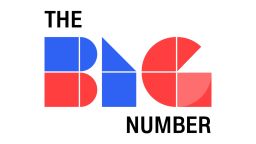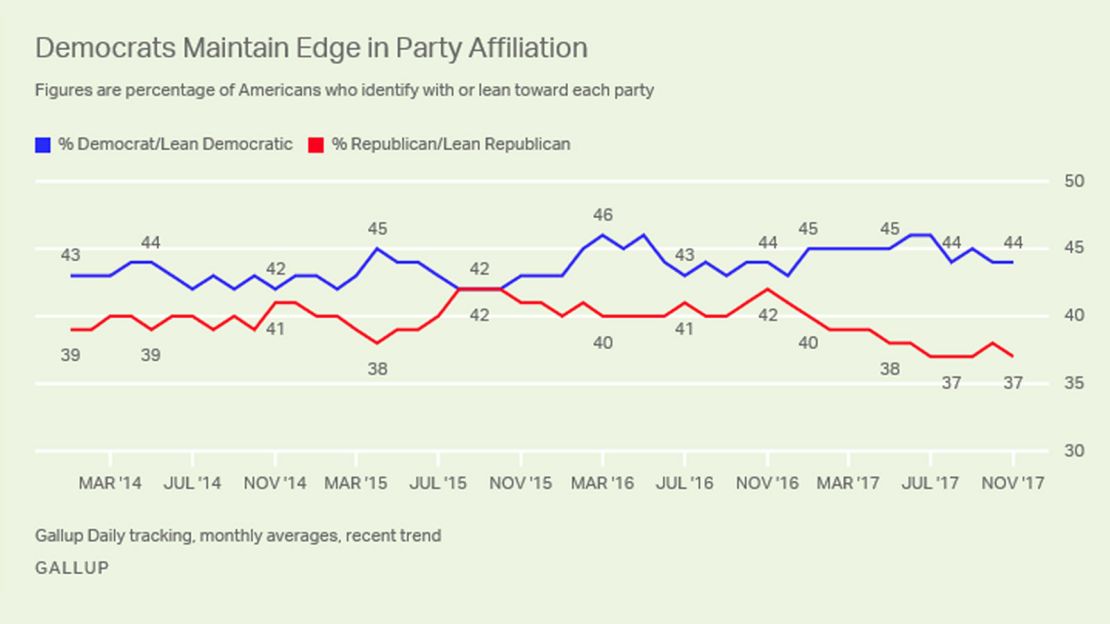One of the best ways to gauge the relative health of a political party’s brand is to see how willing people are to say they identify with the party. Which is why new Gallup poll numbers on party identification should worry Republicans heading into an election year.
Just 37% of people identify as Republicans or leaning toward the Republican Party, compared with 44% who identify as either leaning toward the Democratic Party or as solid Democrats. Another 14% say they are independents and don’t lean to either party.

What’s particularly worrisome for Republicans is the trend line on the party ID question since President Donald Trump was elected in November 2016.
At that point, 44% called themselves Democrats while 42% said they were Republicans. It’s been all downhill for Republicans since then.

How do these numbers compare to the composition of past electorates, according to exit polls? In 2016, Democrats composed 36% of the electorate, as compared to 33% for Republicans and 31% for independents. In 2014, it was 36% Republican, 35% Democratic and 28% independent. In 2012, Democrats made up 38% of the electorate while Republicans were 32% and independents were 29%. In 2010, Republicans and Democrats each were 35% of voters while independents were 29%. And in 2008, it was Democrats – 39%, Republicans – 32%, independents – 29%.
The connection is relatively clear. If Republicans are even with, or close to even with, Democrats in terms of party ID, they win elections – like in 2016, 2014 and 2010. If the Democratic edge is mid-single digits or higher, Republicans usually lose.
Which is what makes a seven-point Democratic edge concerning for Republicans.
Writes Gallup’s Jeffrey M. Jones of the numbers:
“The challenge for the GOP, then, is to convince its increasingly smaller base of voters – most of whom approve of the job Trump is doing – to turn out. Also, Republicans will need to persuade unaffiliated Americans, many of whom may have leaned Republican in the recent past, that Republican candidates and policies offer a better choice for their district, state and country than Democratic candidates and policies.”
Now, a few caveats:
1. This is polling from November 2017, not November 2018. A lot can change in a year.
2. While Republican ID has dropped, Democratic party ID has stayed steady since Trump’s election. Which means that Republicans who longer identify with the GOP are moving into the independent category, not the Democratic one. In theory, Republicans can win them back.
3. Democrats have traditionally held a built-in edge on party identification. Since Gallup started tracking party ID daily in 2008, Republicans have never led – and have been tied with Democrats only three times – in the monthly average: August 2010, and August and September 2015.
Still, the Republican Party’s current status on party ID is yet another data point – along with Trump’s ongoing approval slump and historic trends working against the president’s party in midterm elections – that suggests 2018 could be a disaster for Republicans.
“The Big Number” will be an ongoing feature in The Point, designed to highlight a number you should be paying attention to.


















